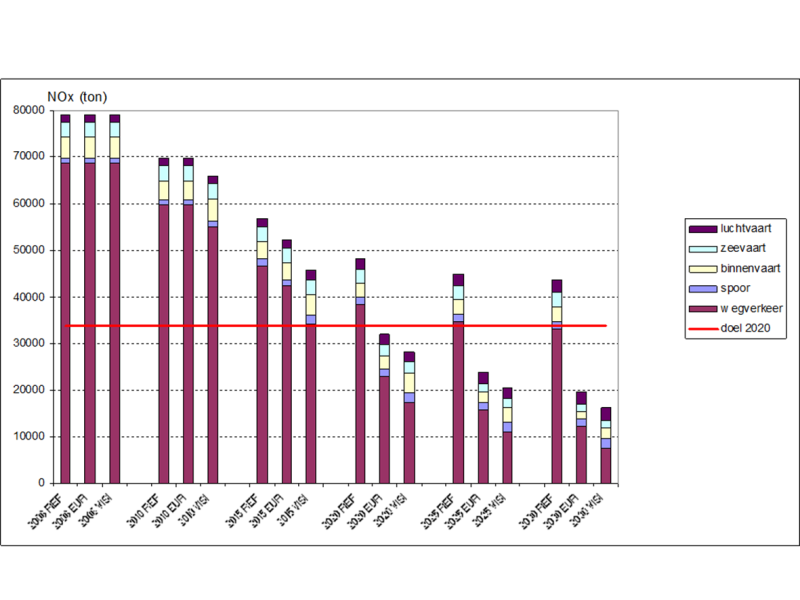MIRA-S 2009
08.17
From 2008 to 2009
TML analysed the evolution of emissions in the transport sector by defining several scenarios, including a reference scenario, a policy scenario (Europe scenario), and a visionary scenario. The study compared these scenarios to examine the possible societal trends and associated environmental impacts.
While MIRA-T and MIRA-BE mainly analyse the existing situation, MIRA-S - with the s of scenarios - looks ahead to tomorrow's environment. What might our environment look like in the future and what are the possible consequences of an unchanged or changed environmental policy? This question lies at the heart of MIRA-S. Using various scenarios, the report indicates how social developments are evolving and what the environmental effects might be. Note: these scenarios are not future predictions but show possible futures.
TML examined for the transport sector the evolutions of emissions from inland navigation, rail traffic, aviation, and maritime transport, and that in a reference scenario, a policy scenario (the Europe scenario), and a visionary scenario. The conclusions are as follows:
While MIRA-T and MIRA-BE mainly analyse the existing situation, MIRA-S - with the s of scenarios - looks ahead to tomorrow's environment. What might our environment look like in the future and what are the possible consequences of an unchanged or changed environmental policy? This question lies at the heart of MIRA-S. Using various scenarios, the report indicates how social developments are evolving and what the environmental effects might be. Note: these scenarios are not future predictions but show possible futures.
TML examined for the transport sector the evolutions of emissions from inland navigation, rail traffic, aviation, and maritime transport, and that in a reference scenario, a policy scenario (the Europe scenario), and a visionary scenario. The conclusions are as follows:
- With the continuation of current policies (reference scenario), greenhouse gas emissions from transport increase until 2020.
- A more thorough policy (the Europe scenario) with technological adjustments and road pricing reverses this trend.
- The visionary scenario focuses mainly on electric vehicles and green energy. In this scenario, greenhouse gas emissions fall by 40% by 2050. This scenario therefore fails to meet the indicative target of a 60-80% reduction in greenhouse gas emissions. It also fails to meet the European renewable energy target by 2020. To meet this target in the short term, increased use of biofuels within transport is necessary. In the long term, the use of electric vehicles powered by green energy can contribute to this.


